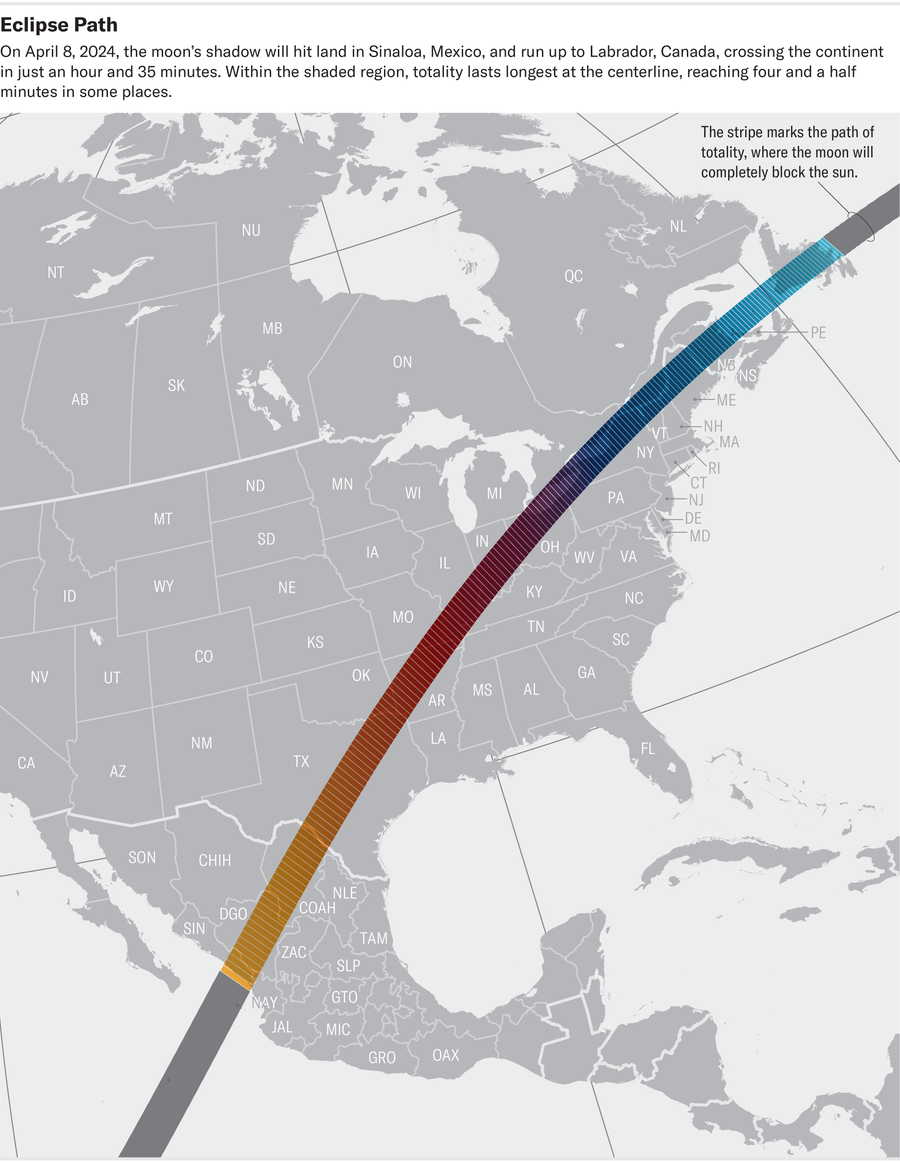February 3, 2024
3 min read
Here’s why the path of a solar eclipse travels in the opposite direction of that of the sun
The sun rises in the east and sets in the west. A glimpse at the map of the April 2024 North American solar eclipse, however, shows a path from west to east. What gives?
The answer lies in the relationship between the rotation of Earth and the orbit of the moon, but the arrangement can be a bit tricky to visualize.
First, let’s look at the eclipse path: on April 8 the moon’s shadow will fall on Earth, blocking out the sun along an approximately 100-mile-wide track that will cross through central Mexico, pass through Texas and cut diagonally across the continental U.S. It will then skim along the country’s border with Canada before it exits the U.S. near the northern tip of Maine and moves through parts of New Brunswick, Prince Edward Island, Newfoundland and Labrador.
On supporting science journalism
If you’re enjoying this article, consider supporting our award-winning journalism by subscribing. By purchasing a subscription you are helping to ensure the future of impactful stories about the discoveries and ideas shaping our world today.
This path moves in the opposite direction of the sun’s apparent trek over Earth each day. But during an eclipse, the motion of the moon’s shadow—not the sun—is what matters. Earth rotates from west to east, says Michelle Nichols, director of public observing at the Adler Planetarium in Chicago. Imagine your vantage point on the planet rolling from west to east each morning to greet the sun, which thus appears to rise over the eastern horizon.

The moon also orbits Earth on a west-to-east path. If you were perched above the North Pole, looking down on the planet from space, Earth would seem to be turning counterclockwise, with the moon traveling in the same direction, just more slowly, Nichols says. Earth, of course, completes a…
Read the full article here







